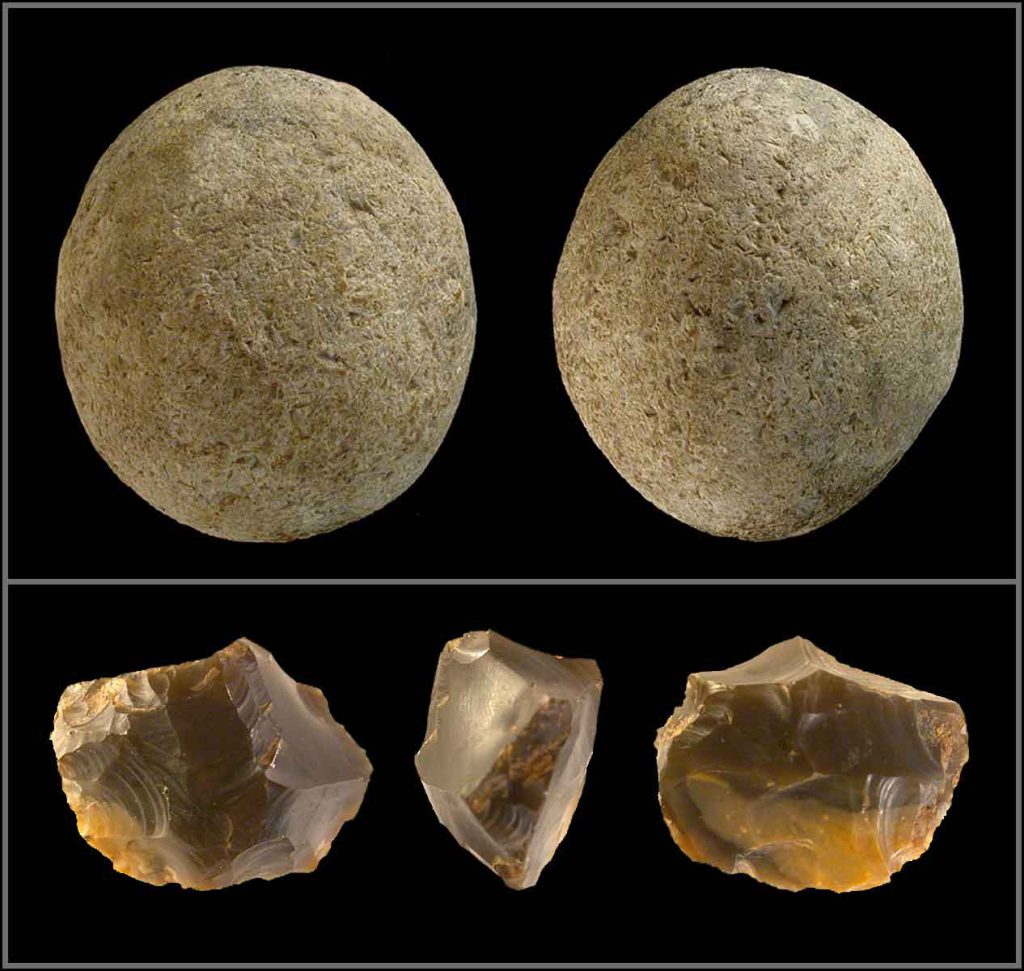Fat, Not Meat, May Have Led to Bigger Hominin Brains

Northern Ethiopia was once home to a vast, ancient lake. Saber-toothed cats prowled around it, giant crocodiles swam within. The streams and rivers that fed it—over 3 million years ago, during the Pliocene—left behind trails of sediment that have now hardened into sandstone.
Deposited within these layers are fossils: some of early hominins, along with the bones of hippos, antelope, and elephants. Anthropologist Jessica Thompson encountered two of these specimens, from an area named Dikika, in 2010.
At the time, she was a visiting researcher at the Institute of Human Origins at Arizona State University. Given no explanation as to their history, she analyzed the bones and found signs of butchery. Percussion marks suggested someone may have accessed the marrow; cut marks hinted that flesh was stripped from bone. To her surprise, the specimens were 3.4 million years old, putting the butcher’s behaviors back 800,000 years earlier than conventional estimates would suggest. That fact got Thompson, now an assistant professor in the department of anthropology at Yale University, thinking there might be more traces of tool use from those early times.
In a wide-ranging review published in February’s issue of Current Anthropology, Thompson joins a team of researchers to weave together several strands of recent evidence and propose a new theory about the transition to large animal consumption by our ancestors. The prevailing view, supported by a confluence of fossil evidence from sites in Ethiopia, is that the emergence of flaked tool use and meat consumption led to the cerebral expansion that kickstarted human evolution more than 2 million years ago. Thompson and her colleagues disagree: Rather than using sharpened stones to hunt and scrape meat from animals, they suggest, earlier hominins may have first bashed bones to harvest fatty nutrients from marrow and brains.
Humans are the only primate to regularly consume animals larger than themselves. This nutritional exploitation, something Thompson and her colleagues call the “human predatory pattern,” has long been synonymous with the flesh-eating, man-the-hunter view of human origins.
Because large animals such as antelope pack a serious micro-and-macro-nutrient punch, scientists have thought their meat contributed to humanity’s outsized brains. A consensus arose in the 1950s that our ancestors first hunted small animals before moving on to larger beasts around 2.6 million years ago. Flaked tool use and meat eating became defining characteristics of the Homo genus.
“It’s a very appealing story,” says Thompson. “Right around that time there appeared to be the first stone tools and butchery marks. You have the origins of our Homo genus. A lot of people like to associate that with what it means to be human.”
Then, starting in the mid-1980s, an opposing theory arose in which Homo’s emergence wasn’t so tightly coupled with the origins of hunting and predatory dominance. Rather, early hominins first accessed brain-feeding nutrients through scavenging large animal carcasses. The debate has rolled on through the decades, with evidence for the scavenging theory gradually building.
The new paper goes further: Harvesting outer-bone meat would have come at significant costs, the authors argue. The chance of encountering predators is high when scraping raw flesh from a carcass. Chewing raw meat without specialized teeth doesn’t give much energetic benefit, studies have shown. In addition, meat exposed to the elements will quickly rot.
Marrow and brains, meanwhile, are locked inside bones and stay fresh longer. These highly nutritional parts are also a precursor to the fatty acids involved with brain and eye development. And more easily than flesh-meat, bones could be carried away from carcass sites, safe from predators.
Conventional thinking has been that the behavioral package of early hominins was to go after meat and marrow together, explains Briana Pobiner, a paleoanthropologist at the Smithsonian Institution, who did not contribute to the new paper. But in the new paper, she says, “This team has shown that marrow may have in fact been more important. It’s a nuance, but an important nuance.”
The Pliocene—between 5.3 and 2.6 million years ago—was an era of dramatic change. An intensely variable and cooling climate transformed vast swaths of rainforest into mosaics of grassland and savanna. Large clearings spawned ecological niches for opportunistic and versatile hominins like Australopithecus, a likely contender for the Homo ancestor, and Kenyanthropus to fill in. Larger predators may well have left carcasses for them to scavenge.
Evidence suggests hominins shifted their diet around 3.76 million years ago as they took advantage of the open spaces. By around 3.5 million years ago, some species of Australopithecus already showed increased brain sizes, up to 30 percent larger than chimpanzees of comparable body size. Canines had shrunk to proportions later seen in the genus Homo, and hand morphology was already more human than ape, with potential both for terrestrial travel and tool use.
Percussive tools, the authors argue, were the key to the transition to large animal exploitation. Rocks could bash open bones, exposing the marrow inside. The alternative—that humans sharpened stone against stone, creating a flaked tool to carve meat from bone—seems more onerous, they say. They argue that such meat carving and the associated tool creation would likely come later.
As to who wielded these percussive instruments, the timeline presents a puzzle. The earliest Homo specimen is now dated to 2.8 million years. The Dikika fossils suggest butchery behaviors at 3.4 million years ago. Homo may have emerged earlier than scientists suspected—a theory that would need more fossil evidence to support it—or another hominin, such as Australopithecus, may have created tools before Homo.
Some scholars aren’t convinced by the study’s arguments, however. For example, Craig Stanford, an anthropologist at the University of Southern California, questions the emphasis on hominin scavenging behavior appearing before hunting. “We have no examples today of animals that scavenge but don’t hunt,” he adds.
To test the new theory, the review authors suggest seeking out further evidence of percussive tools that predate flaked tools. Researchers could, they note, broaden the search for the signatures of such instruments within both the existing fossil record and at dig sites. Thompson’s graduate students, for example, are using 3D scanning and artificial intelligence techniques to improve the identification of marks on fossils—whether they were created by early hominins, saber-toothed cats, hyenas, or other types of creatures.
What they uncover could deal a blow to their theory, but it will also, undoubtedly, enrich our understanding of how our ancestors evolved.
This article was republished at The Atlantic.

































